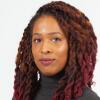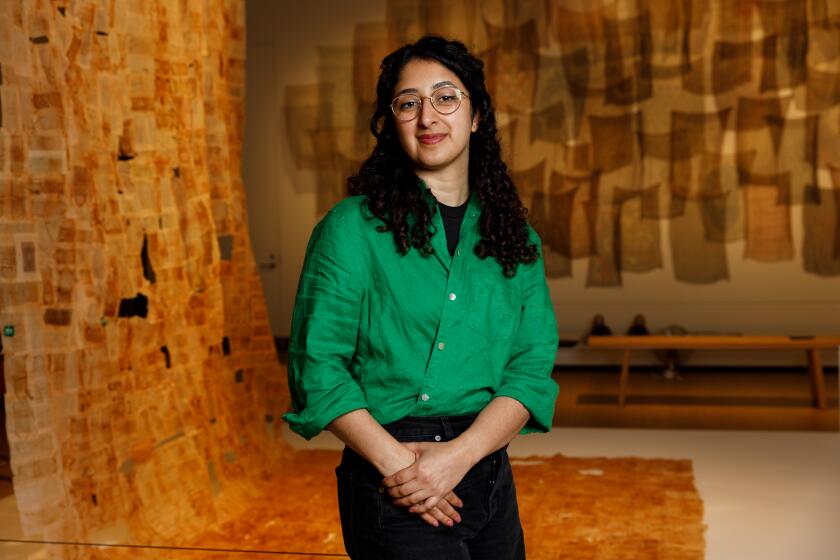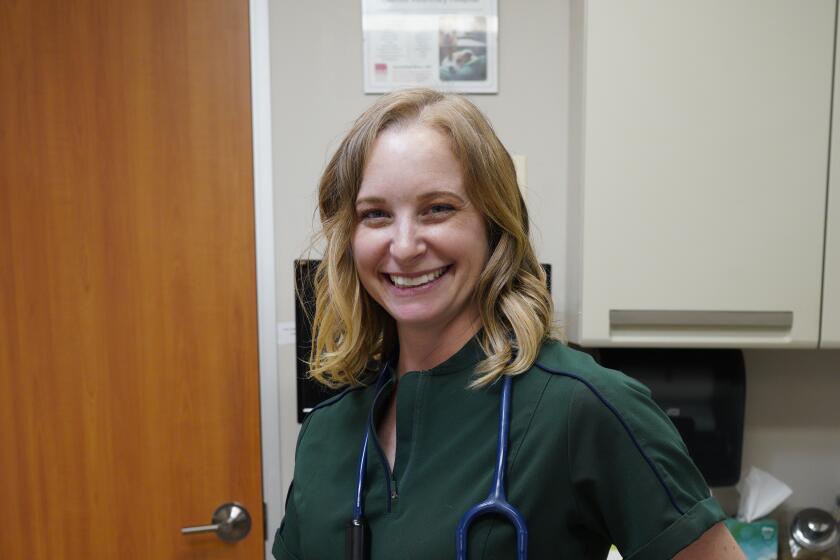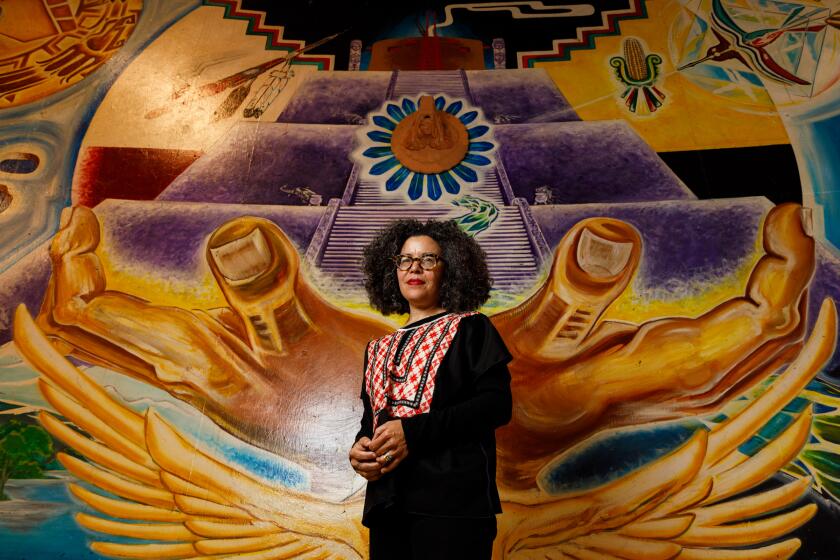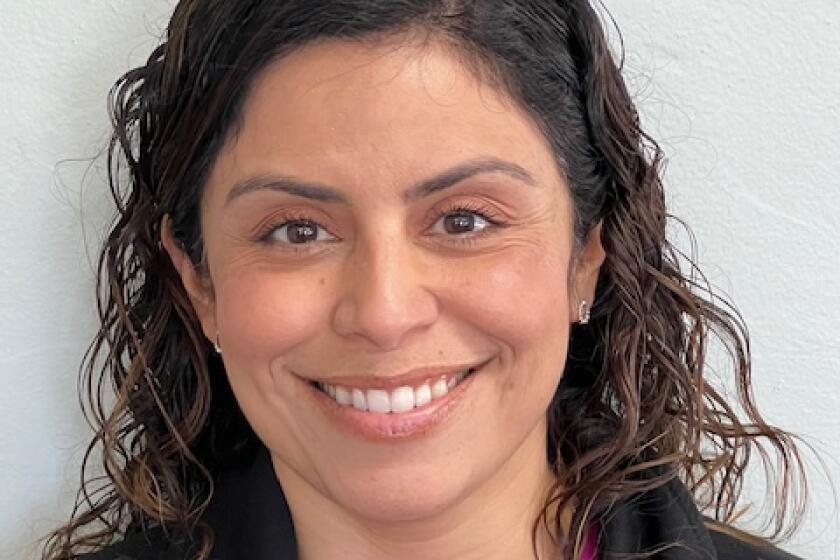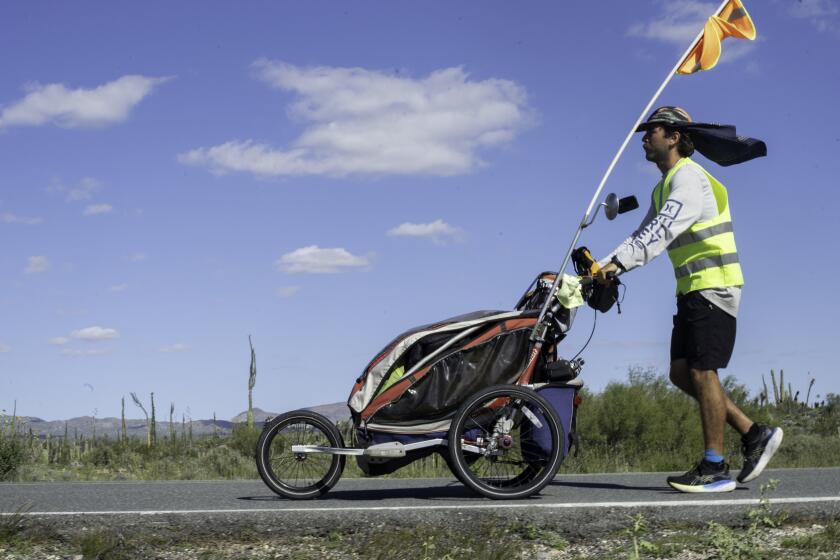There’s more to learn about San Diego’s Chinese history, new museum director says
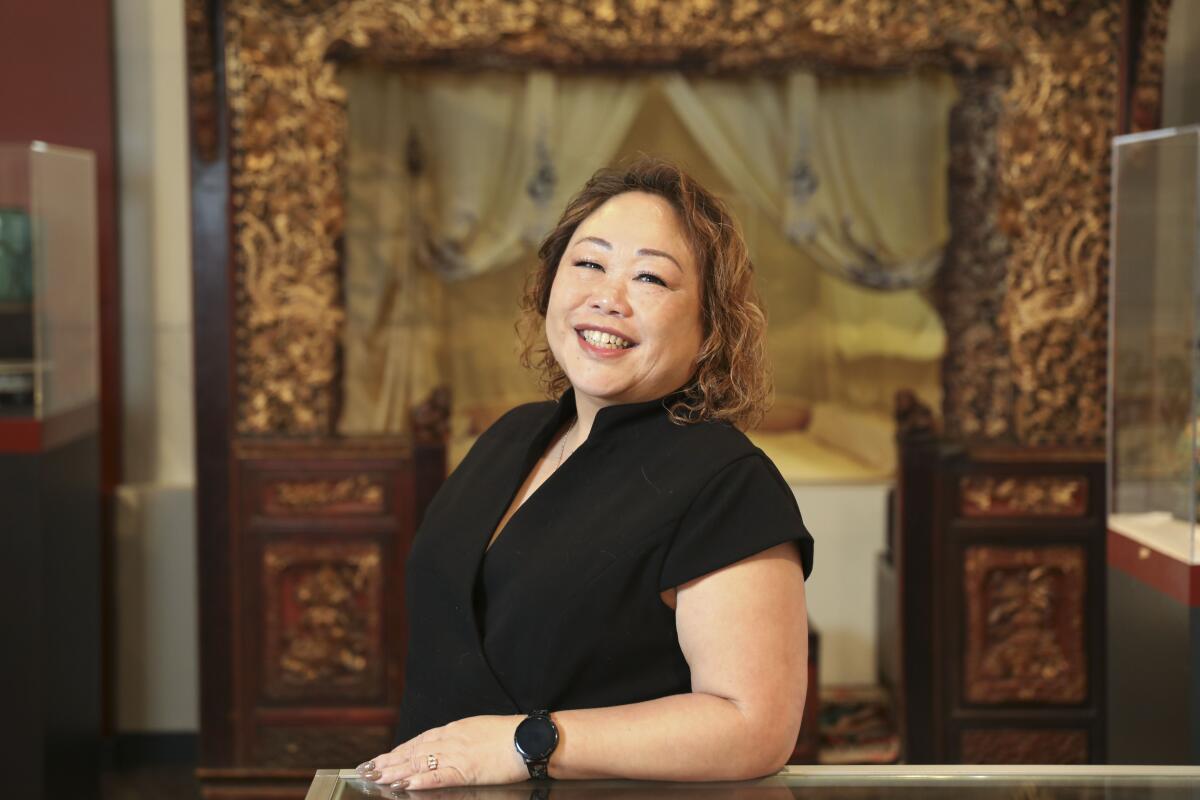
From the time Jacinta Wong was a young girl, growing up on the south side of Chicago, she was working in her community. Her mother was a social worker who would go on to co-found the Chinese American Service League in 1978; it became one of the largest social service nonprofits for Asian Americans in the Midwest, and it was where young Jacinta spent lots of time helping her mother with fundraising, tutoring, learning about her culture, and anything else that was needed.
Today, not much has changed as she’s gone from a career in service to her hometown, to a new chapter as executive director of the San Diego Chinese Historical Museum.
“I was intrigued by the story of the museum and the San Diego Asian Pacific Historic District. Coming from a city with one of the largest Chinatowns in the U.S., I had a lot of ideas about how to promote the museum and encourage people to come learn about this wonderful piece of San Diego and Chinese history,” she says.
Wong, 52, previously worked for the Cook County State’s Attorney’s Office, Chicago’s board of ethics, its department of buildings, and for the city clerk, leading its CityKey program, which created a municipal identification program in Chicago, including for people who are unhoused or undocumented, allowing access to city services. Now, she lives in Scripps Ranch and has two children who live in Michigan and Illinois. She took some time to talk about her new role, her family’s example of helping others, and working directly with Michelle Obama when the former first lady was leading Public Allies in Chicago in the late ‘90s.
Q: You come from a family where community organizing and civic engagement was pretty important (your mother, Bernarda “Bernie” Wong, has been recognized both by the City of Chicago and the Illinois State Senate for her work). What did you grow up understanding about this kind of service work, and its importance?
A: Honestly, I never really thought much about it as it was just something we all participated in, in our household. Most of my friends as a young child were all the kids of the other co-founders and when Mom became the first staff member of the agency, we all just pitched in to help. While Mom had a stairwell full of clients waiting for assistance, I helped make sure everyone was comfortable and even helped with ESL classes. Dad would even come by and visit with folks, just to socialize with the clients and make them feel welcome while they waited. As the agency grew, Dad and I continued to support in whatever way we were needed — from neighborhood fairs to helping clean the garage the agency expanded to, and so many fundraisers over the years. It never occurred to me that there was another way to do things. It was the best childhood I could have imagined.
Q: How did your mother’s work inspire you as you thought about your own career and what you wanted to build for yourself?
A: Mom was a social worker and loved what she did, but she was adamant that I not follow in her footsteps, even though I loved helping people. For Mom, work was never work for her, but sometimes her passion to get things done did interfere with her finding time to just be a mom. We all understood how dedicated she was to helping people, so we all learned how to live to best support her. I think the main lesson I did learn from Mom was that whatever I did want to do, it had to be fulfilling, but also offer a work-life balance. I think it made me a better mother for my kids while I worked for the City of Chicago in a number of capacities.
Q: While you were in law school at Northwestern University, you worked under former first lady Michelle Obama, who was director of Public Allies in Chicago, at the time. Did you have opportunities to work directly with her? What did you learn from working with her, or the culture she developed, that you can recall?
A: Michelle was actually my first boss after I graduated with my bachelor of arts from Loyola University. Public Allies was a great learning experience where I was matched with the legal clinic at Northwestern School of Law. Working with both powerhouses to learn about advancing social justice issues and learning through group cohorts and mentorship what work was needed to become a good leader was truly enlightening. Michelle always had her door open and was happy to talk and provide guidance to all of us about any topic. I admired her willingness to not just be our leader in name only, but how she showed us how to lead by her actions. The many discussions I had with Michelle and Barack over the course of my time at Public Allies about the usefulness of a legal education were one of the many reasons I eventually decided to apply to law school.
Q: Growing up, you spent considerable time in Chicago’s Chinatown, attending second school studying Cantonese, learning Chinese dance, studying Spanish in high school, visiting family in California, Canada, Peru, and Hong Kong. What kind of influence did this have on the way you see and understand the world around you, and how you approach your work in your communities?
A: I can say that, as a child, I hated to have my afternoons cut short to attend Chinese school when we moved to Chinatown while I was in fourth grade, but it served me well in the long run. I eventually was able to stop attending separate Chinese classes when I transferred to Saint Therese Catholic School, where Chinese was taught as the foreign language. I also spent many Saturdays learning Chinese dance and about Chinese traditions. When I graduated from eighth grade, I was finally able to travel to Hong Kong and meet family, which drummed in the idea that all that extra learning wasn’t in vain. In high school, I studied Spanish and again it became very evident that it would be useful when we went to visit extended family living in Lima, Peru, during my sophomore year. My maternal grandmother spoke Spanish, having been born in Peru, but my mom’s generation only learned Chinese growing up in Hong Kong. I became an important connection for our family to keep in contact with the extended family in Peru when my grandmother was not around. I grew up thinking that traveling to visit family abroad was commonplace, but as I met more and more people who never had the opportunity to travel beyond their neighborhood or Chicago’s limits, I began to understand how only living in one place with one viewpoint limited people’s ideas of the world we live in. I think my travels through the various neighborhoods of Chicago, as well as abroad, have helped me be more receptive and appreciative of people different from myself and taught me to try to be more open and tolerant of different viewpoints.
Q: What are some of your goals, or your vision, for the museum in your new role?
A: I hope to help make the museum a destination spot in downtown San Diego, especially given its proximity to Petco Park, Gaslamp Quarter and the convention center. I want to engage everyone, young and old, to learn a little more about Chinese history and the Chinatown that once was; to recognize the contributions of Chinese people locally and, hopefully, encourage dialogue that promotes peace and has a positive social impact. I hope that people leave the museum thinking more about our historical commonalities than our differences.
Q: What is the best advice you’ve ever received?
A: I think the best advice I’ve received was that life is too short to just survive, you should never fear change, and you are never too old to try something new.
Q: What is one thing people would be surprised to find out about you?
A: I love spending time on the water and know how to drive a speedboat.
Q: Please describe your ideal San Diego weekend.
A: My ideal weekend in San Diego would definitely include trying lots of delicious food, laughter with good company, spending time near or in the water, basking in the sunshine, buying lots of goodies at a farmers market, and catching a beautiful sunset.
What I love about Scripps Ranch ...
I looked at dozens of places in San Diego before deciding on where to move. I loved the warm, welcoming, neighborly feel of my apartment complex as soon as I found it. Also, being close to a freeway, the many ethnic grocery stores, restaurants and retail shopping of nearby Mira Mesa made me feel like I had found the right place to call home. I’m a bit of a foodie and miss all the great food options around Chicago, so if people want to share San Diego tips with me, please stop by the museum and say hi!
Get Essential San Diego, weekday mornings
Get top headlines from the Union-Tribune in your inbox weekday mornings, including top news, local, sports, business, entertainment and opinion.
You may occasionally receive promotional content from the San Diego Union-Tribune.
